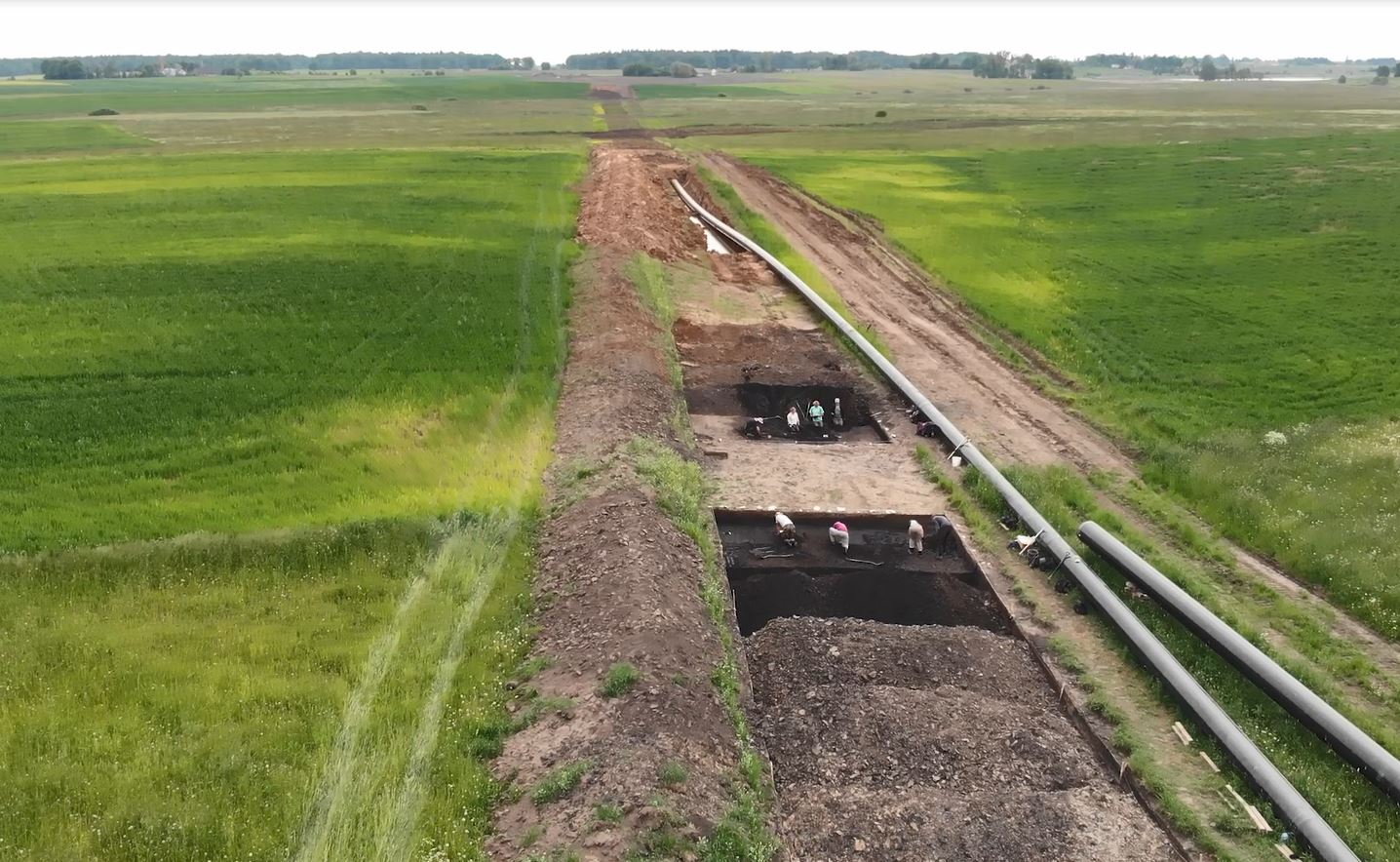Archaeological investigations lasting a year and a half have been completed after almost 90% of the construction of the gas pipeline interconnection with Poland was completed in Lithuania. Historical finds were searched for along the entire 165 km long route of the GIPL interconnector in Lithuania. This is the largest recent project for the Lithuanian archaeological community.
Prof. Albinas Kuncevičius, Head of the Department of Archaeology at the Faculty of History of Vilnius University, who led the archaeologists working on the pipeline route, says that once the work has been completed in the real environment, next to the pipeline being installed, the research will move to a different space - reports on the research are being drafted, material for the book is being prepared, and a decision will be taken on the inclusion of the discovered historical objects in the list of archaeological monuments.
“The archaeological research in the area of the gas pipeline under construction has taken us from Kernavė, the old historical capital of Lithuania, to the Rudamina Mound on the Lithuanian-Polish border. The European practice, used for the first time in Lithuania, has proved to be very successful, when archaeologists, together with the pipeline contractors, took part in the removal of the upper vegetation layer and thus discovered valuable historical objects hidden in the ploughed land or under the thickly grown grass,” says Prof. Albinas Kuncevičius.

The most important archaeological finds are the Stone Age settlements discovered between Kruonis and Elektrėnai, as well as medieval burial sites. Four archaeological sites were found in the Alytus district, around the Krokialaukis municipality – Stone Age settlements, and in the Lazdijai district, near Aštrioji Kirsna and Rudamina, at the former intersection of the Jotvingian lands and Lithuania Minor, Roman-period (1st-8th centuries) settlements and decayed 16th-18th century villages. The latter sites are likely to be the sites of discovery and production of iron ore extracted from puddles, which have never been explored before.
“The construction of the pipeline and the archaeological research add value – not only are we installing a powerful energy artery linking us to Western Europe, but we have also helped to historically explore a significant part of Lithuania. The new information on hitherto unknown Stone Age settlements, their daily life and economic activities provides a solid basis for further archaeological research, contributing to the knowledge of Lithuania’s historical heritage,” says Nemunas Biknius, CEO of Amber Grid.
During the construction of the gas interconnector, detailed archaeological investigations were carried out over an area of almost 9,000 square metres, and archaeological surveys were carried out across the entire pipeline route, covering nearly 200 hectares of land.
The work on the GIPL pipeline route was carried out by a joint team of archaeologists from the Lithuanian Institute of History, Klaipėda University, Vilnius University, and the companies “Kultūros paveldo išsaugojimo pajėgos“ and “Kultūros vertybių paieška“.
While working on the GIPL pipeline route, the archaeological teams inspected the topography of the pipeline route, traversed the area with a metal detector, photographed selected sites with drones, participated in the uncovering of the topsoil, and carried out a detailed investigation of selected sites within the pipeline protection zone.
Within the year and a half since construction of the GIPL pipeline started, almost all parts of the 165 km pipeline have been welded, 102 km of the pipeline have been filled with gas and hydraulic testing of the remaining part of the pipeline is underway. The entire pipeline route has been cleared of explosives, and last summer, complex horizontal directional drilling was carried out to construct the pipeline under Lithuania’s largest rivers - the Neris near Kernavė and the Nemunas near Alytus. This summer, the interconnector installation work is concentrated at the Santaka gas metering and pressure regulation station in the Lazdijai district, on the outskirts of Šeštokai.
The GIPL pipeline will connect the Lithuanian, Baltic and Finnish gas markets to the European Union. The pipeline will enable gas to be sourced from a variety of sources, more efficient use of Lithuania’s gas transmission system and the Klaipėda LNG terminal, and, in the future, ensure biomethane and hydrogen flows in the region. The GIPL link will be able to transport up to 27 TWh of gas per year towards the Baltic States and up to 21 TWh per year towards Poland.


